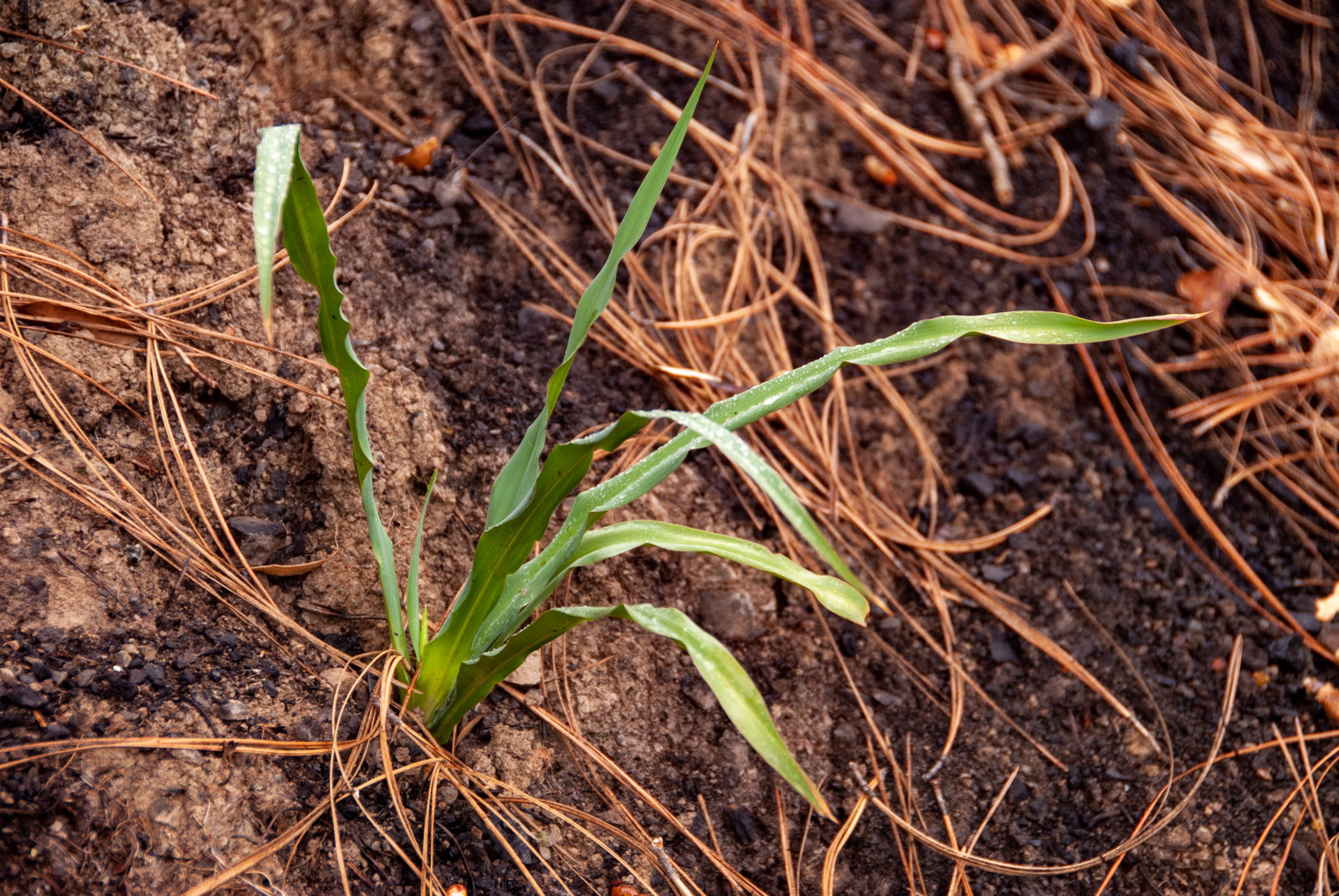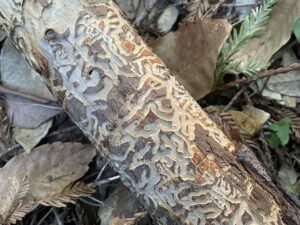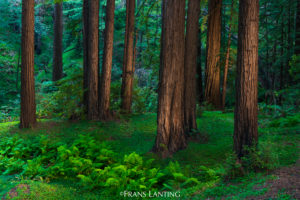Since last year’s devastating North Bay wildfires struck a five-county region in Northern California, destroying 44 lives and almost 9,000 homes, the residents, business leaders, elected officials, tribes, scientists, and managers in the region have been engaging in a long process of introspection. The scale of the disaster forced the examination of some long-neglected truths about our place in the landscape, our place in our watersheds — and our obligation to be better stewards … for the sake of our very own lives.
I’m a watershed steward for the North Coast Regional Water Board, where last October, I found myself working far outside my normal duties as our office led the state’s post-fire erosion-control response. The fires happened just as we expected rainy season to start, so we worked with extreme urgency to armor the 617 streams affected by the fires against discharges of toxic materials, sediment, and ash from burned properties.
Whether it was the physical remediation work of the community, or a very moderate rain year, or both, we were spared significant impairment of our already suffering waterways. And as we worked through our first post-fire winter, the community reflection process began in earnest. Many have heard of, and some even experienced, the last major fire to strike this region: the Hanley Fire of 1964. What was less widely known was that the Hanley fire was actually the third major fire to strike this area – others having taken place in 1923 and 1871, and all within the same 3-4 week period in late September/early October.
Prior to my work at the Water Board, I spent nearly 15 years at the San Francisco Estuary Institute building out the state’s only fully staffed historical ecology program. My emphasis, aided by my graduate work at UC Berkeley, was fire ecology. Specifically, indigenous fire management in coastal California. With this background, many of the questions that followed the last two traumatizing fire seasons have been especially meaningful to me.
Armed with new (for some) realizations that fire is a natural part of California’s ecology, along with the reality that even for those residing deep in an urban setting few are truly immune to its potential ravages, many residents and land managers alike are searching for new solutions. Questions have emerged about the fire traditions of California Indian Tribes. Could a solution lie in those traditions? But to answer this question, an acknowledgement of some history is required.
First we have to acknowledge that prior to colonization, tribes burned most of California on an annual basis. That alone can be a challenging reality for modern people to contemplate. Perhaps the most notable non-native researcher on Native fire traditions, Omer Stewart, found it impossible to convince his fellow academics, funders, and publishers of this fact. He concluded, after interviewing scores of descendants and immigrants, and reviewing 76 references that – with one or two exceptions, all of the major tribes and subdivisions set fire to California. “If the cultural pattern concept has any validity, these data leave room for only one conclusion: burning-over was not, as Kroeber reported, ‘considerable’ but was absolutely universal, wherever vegetation was sufficient to carry a fire,” Stewart writes in Forgotten Fires: Native Americans and the Transient Wilderness, a posthumous collection of his work published in 2002. “[T]he evidence presented leaves no room to minimize the role of the Indians in the complete burning to which California fields and forests were subjected by saying that lightning was the major cause.”
Yet Stewart’s research could not be published in his lifetime. The first publisher who committed to consider the work replied to his manuscript by stating “[y]our manuscript as it stands is in perfectly impossible shape and no reader could give the time that would be required to deal with it.” Decades passed with little progress, when six months before his passing in late 1992, his last effort at publication failed because the work was “too out of date to be published in its original form.”
But misconceptions about the ecological role of Native burning have roots deeper in California’s history. Mexican Governor Luis Antonio Arguello forbade traditional tribal fires in 1827. After Statehood, Section 10 of the 1850 “Act for the Government and Protection of Indians” stated that “any person was subject to fine or punishment if they set the prairie on fire, or refused ‘to use proper exertions to extinguish the fire.’”
The original language of this section was changed from “Indian” to “any person” in the final version of the law.
A year later, in his first State of the State address, California’s first American Governor Peter H. Burnett dedicated fully half of his address to conflicts with the state’s original inhabitants, stating:
“The white man, to whom time is money, and who labors hard all day to create the comforts of life, cannot sit up all night to watch his property; and after being robbed a few times, he becomes desperate, and resolves upon a war of extermination. This is the common feeling of our people who have lived upon the Indian frontier. The two races are kept asunder by so many causes, and having no ties of marriage or consanguinity to unite them, they must ever remain at enmity.
That a war of extermination will continue to be waged between the races until the Indian race becomes extinct must be expected. While we cannot anticipate this result but with painful regret, the inevitable destiny of the race is beyond the power or wisdom of man to avert.” Jan 6, 1851.
This is where we stood as the First Nations of California for more than two centuries: at war, subject to annihilation, and even the most studious non-native advocates and intellectual allies marginalized.
As the decades passed, trends in federal Indian policy have evolved from paternalism and assimilation to tribal self-governance and self-determination. Academia has been slower in keeping pace, and secular land management slower still.
But coming back around to our core question: might a solution to our modern fire quandary lie in Native burning traditions? Perhaps, but might I suggest that this young, modern colonial society has some homework to do before probing too far into what might be a deeply sensitive question for tribes to answer.
For starters, amend the Wilderness Act. This Act has come to define for this country what is meant by the word “natural” – at least in the realm of ecology and management of natural resources. It considers something to be “natural” when it is absent of the influence of humans. In essence, this foundational piece of legislation excludes tribes and their management of natural resources from what this nation considers “natural.” It also fails to acknowledge the role of humans in the alteration of global climate processes, begging the question – is there any place on Earth that’s “natural” anymore?
Second, in this 249th year of a colonized California, perhaps it’s time for the state to truly invest in its relationship with tribes. While Indian policy largely resides in federal hands, there’s nothing to prevent the state of California from improving these often-strained relationships. If there were more Native Californians in the employ of state resource agencies, if more state grants were awarded to tribal projects, if tribes were adequately consulted in major resource management decisions, perhaps the solution to this fire quandary would present itself.
Modern fire scientists have been pointing to the critical concern of fuels accumulation for decades. But public policy and funding has largely ignored even them. There is no “traditional knowledge” solution to that.
Similarly, there is no “traditional management system” for large-scale reduction of surface fuels and stand densities. There is a tremendous amount of work that needs to be done – driven by western science – to get our forests, hills, and valleys back to a condition where age-old cultural practices would make sense as a maintenance strategy.
In the meantime, perhaps we can work on the social, political, and cultural solutions to the human problems that have led us down the path toward ecological collapse.





